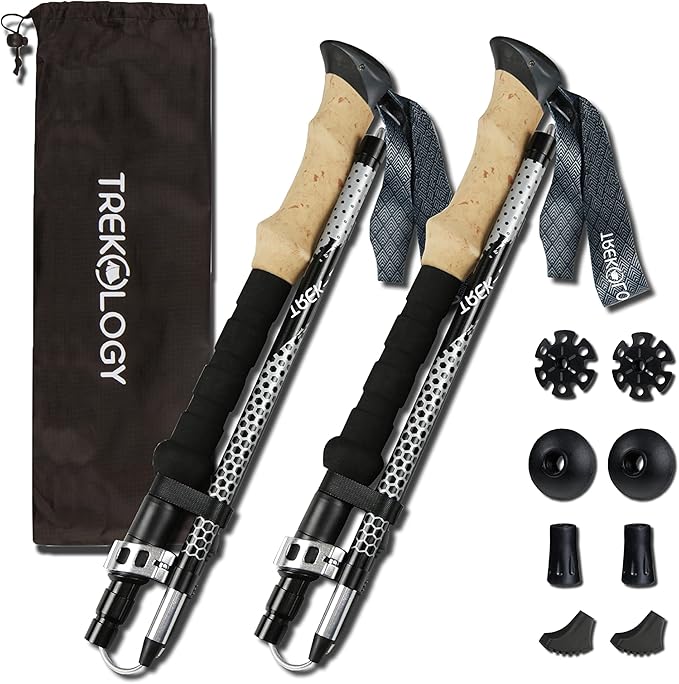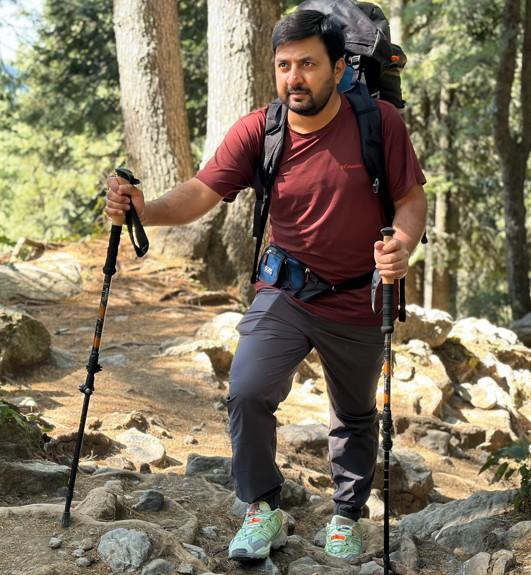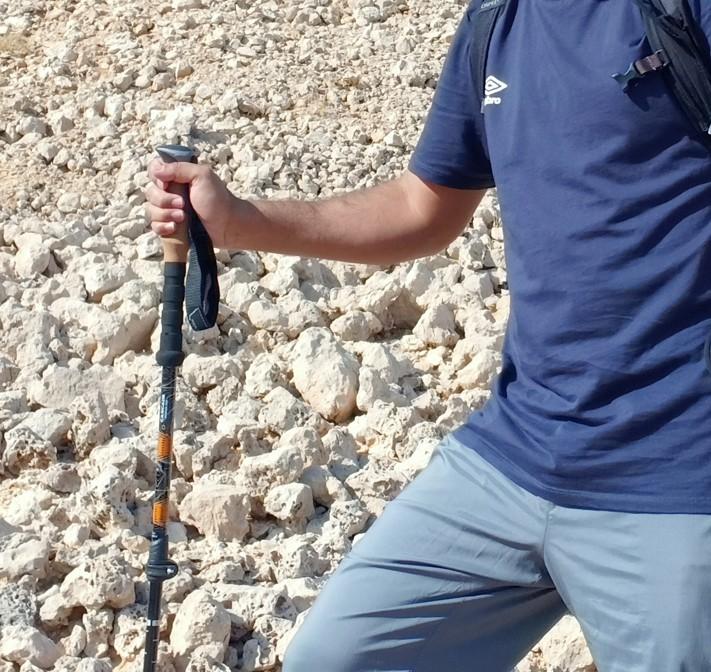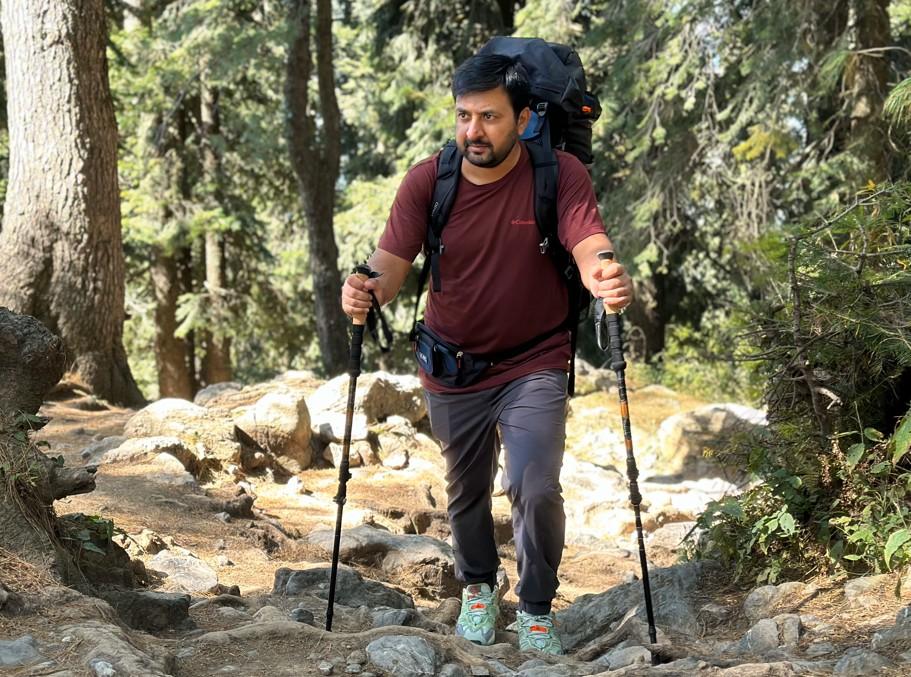Trekking poles (also known as hiking poles) provide stability on the trail. They support your hips and knees by balancing weight. This is especially helpful during downhill hiking. Trekking poles vary in price. You can find cheaper models starting at $25. High-end trekking poles can cost up to $200. Many hikers might think that only expensive models work well on the trail.
The reality is that you don’t need to break the bank for trekking poles. Many affordable trekking poles offer the features you need on the trail. We’ve tested various budget-friendly hiking poles over the years. This article shows they are the best choice for any hiking terrain.
Best Budget Trekking Poles Reviews
1. Trekology Trek-Z 2.0
The Trekology Trek-Z 2.0 is a budget-friendly top trekking pole that is foldable at an affordable price of $36. They are comfortable and adjustable at far less price than the most expensive models. Made of solid aluminum, they are strong and built to last. This makes them a great value for your money.

We liked the EVA foam grips idea, which is comfortable to hold and also provides a solid grip. Hiking downhill puts a lot of pressure on your hands. This pressure can make the pole’s grip uncomfortable. An uncomfortable grip can cause blisters and tiredness.
One thing we noticed is that they are a bit heavy, especially for ultralight backpackers. But it’s not a big deal considering their quality, durability, and price. For instance, if you need one pole for outdoor use, these poles are the top picks due to their durable material.
These poles also come with different tips that cover a variety of trail types, and we rarely used all of them. Another great plus point is that they are foldable; you can fold them while on the go. The locking mechanism works great, and I never saw them lose even during extensive use.
You can easily disassemble them by pushing shaft sections toward the locking button. They come in a quality bag that helps to keep your other gear protected by pole sharp tips. All in all, these poles are a great foldable option that don’t break the bank and still provide great value for users.
2. Cascade Mountain Tech Trekking Poles
If you want trekking poles for under $30, consider Cascade Mountain Tech. They’re a popular choice. They are not only the cheapest option out there but also come with the cork grip.
Isn’t it great? Indeed! The cork grip provides great comfort on the trail. I like cork grips. They cut down on vibration on tough terrain. This helps make your hands more comfortable.

These poles also come with many different feet, tips, and baskets for all kinds of terrains. That means you don’t have to buy the tips separately, further cutting the budget. Locking mechanisms offer strong security. They stay in place, even when you push hard while hiking downhill.
However, I noticed that the locking mechanism is not as good as compared to expensive models. On a few hikes, I had to adjust the locks several times, which was annoying. But if you adjust them properly, they lock in place and remain fixed without slipping. They are not the lighter option (10.4 ounces per pole), but not a deal breaker, seriously.
I took them on various terrains like desert hikes, rough paths, and steep trails. These poles always impressed me. When not required, I simply attach them to my hiking backpack and never feel the burden.
Overall, these hiking sticks are well-made and designed for the price, suitable for average hikers and backpackers.
Read more: Cascade Mountain Tech Trekking Poles Review
3. Black Diamond Trail Trekking Poles
If you can add a few more bucks to your hiking poles budget, you can get better-quality hiking poles. Yes, the Black Diamond Trail Trekking Poles are collapsible, lightweight poles under $100.
If you’re concerned about the extra weight of budget hiking poles, then the Black Diamond Trail Trekking Poles are compact and offer great value. They also work well on varied terrain and in different weather conditions. With their excellent stability, they are also durable.

They have a strong aluminum shaft, which offers a great balance of strength and lightness. They are easy to adjust compared to our other budget hiking poles, thanks to the FlickLock Pro system. It’s quick and secure, much better than the Cascade Mountain Tech Trekking Poles. They never slipped or collapsed, even when we applied pressure during downhill hikes.
The cork grips are another standout feature, providing excellent comfort. The best thing about the grips is that they are moisture-wicking, which helped a lot during warmer hikes. If you have sweaty palms, these poles might be your best bet. They’re not long, so they may not be suitable for taller individuals.
The Black Diamond Trail poles provide great shock absorption, even on rough and bumpy terrain. I could hold them a bit lower when needed, as there is extra foam grip below the main handle. These poles come with different rubber tips for various terrains, just like the other ones we reviewed.
Overall, the Black Diamond Trail Trekking Poles are lightweight, reliable, durable, and affordable trekking poles.
How to Choose Budget Trekking Poles
Weight and Packed Size
Weight and packed size are key factors to think about when buying budget trekking poles. Most of the budget trekking poles are heavy, and also they don’t pack light.
Related: Carbon Fiber vs Aluminum Trekking Poles
Expensive trekking poles, like the MSR DynaLock Ascent Carbon, are great. They balance weight and packability well. They packed down so small that you can easily pack it in your bag. I always prefer poles that pack down small enough so that I can put them in my backpack.

Most of the hiking backpacks offer many strings to attach your poles outside the bag. However, I prefer to keep them inside the backpack. Some hikers prefer to attach them outside the bag so they don’t bother about the packed size.
There are two common designs for poles: telescoping and foldable. Telescoping poles are adjustable and come with a locking mechanism. Foldable poles are easy to store and carry.
Grip
You will find three types of trekking pole grip materials:

- Cork Grips: Outstanding comfort and moisture-wicking properties, but they are mainly expensive.
- Foam Grips: Foam grips are common in budget trekking poles. They provide a good grip and comfort but are not that good on moisture-wicking properties.
- Rubber Grips: Rubber grip poles are not that common these days. But they are good during winter weather. However, they lack comfort of cork or foam grip handles.
Durability
I highly rate durability in trekking poles, especially if you plan to use them on tough terrain. Poles’ real test begins during steep downhill, when you have to shift your weight on them. The thinner ones will flex with ease, which can be risky for maintaining your balance.
Manufacturers need to cut weight. This will make products better for long hikes and backpacking. So they try to keep the poles thinner. Material also plays a significant role in durability. Carbon fiber poles are more sturdy but expensive.

Most budget hiking poles are made from aluminum. It’s not as strong as carbon fiber. Aluminum sticks are better than carbon under high pressure. They have a lower chance of breaking compared to carbon fiber. Now you need to choose.
Choose heavier poles for better durability or lighter ones for quicker thru-hiking.
Pole Tips and Baskets
Most modern trekking poles, even the affordable ones, have various tips and baskets. These help you hike on different terrains. The poles that we reviewed all come with the tips and baskets. They provide significant grip on a variety of hiking trails and conditions.
You can’t take them all because they take up space. So, it’s best to learn about the trail first. Then, pack one or two tips based on the terrain.
I always carry rubber tips, as these don’t make any noise on rocks or paved terrains. Mud baskets perform well on the soft dirt and sands. You can use them on the fluffy snow as well.
Price
Trekking poles come in a wide range of prices from $20 to $200 or more. You don’t need the expensive ones to hike in the majority of the cases.
Most poles we reviewed perform well on the trail, regardless of their price. If you’re a thru-hiker or backpacker, you may want a lightweight option. But this usually costs more.
Some budget options, such as the Trekology Trek-Z 2.0, offer many features found in pricier poles. Cork grip poles are more comfortable, but they’re pricier. Foam poles offer decent comfort and good value for your money.
If we talk about material, then the carbon fiber poles are expensive due to their durability and lightweight. And aluminum poles are affordable, but they are not as strong as carbon fiber. That said, budget-friendly poles offer enough features for most terrain types.
Summary
That’s all. You don’t need to break your bank to buy expensive trekking poles. Budget options such as Trekology Trek-Z 2.0 offer enough features to cover your needs on almost all kinds of terrains. Only the long-distance thru-hiker who needs extra comfort and wants to carry less weight may find the expensive models a better option. But a common hiker should not worry about picking the expensive modes. Cheaper poles that we reviewed do well on all kinds of terrains. Once you’ve picked the right poles, learn How to Use Trekking Poles effectively for better support and balance.
Read More:
